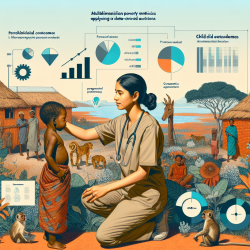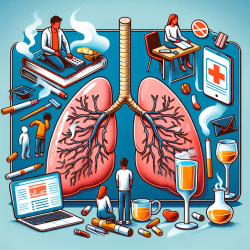Understanding the Impact of Climate Change on Pediatric Respiratory Health
As a practitioner dedicated to improving children's health outcomes, it's crucial to understand the intersection between climate change and pediatric respiratory health. Recent research, such as the study titled "Impact of climate change on paediatric respiratory health: pollutants and aeroallergens," highlights the growing threat that climate change poses to children's respiratory systems. This blog aims to equip you with the knowledge to address these challenges effectively.
The Data: Climate Change and Respiratory Health
According to the research, climate change is expected to increase the prevalence of pollutants and aeroallergens, which in turn exacerbates respiratory diseases in children. The study identifies key pollutants such as particulate matter (PM2.5 and PM10), ozone (O3), and nitrogen dioxide (NO2) as significant contributors to respiratory issues. These pollutants are linked to lower lung function and increased asthma severity in children.
Moreover, aeroallergens like pollen, dust mites, and mold are becoming more potent due to climate change. Increased temperatures and humidity promote the growth of these allergens, leading to higher exposure and sensitization in children. This can result in allergic reactions and asthma exacerbations, which are particularly concerning for pediatric populations.
Health Disparities and Vulnerable Populations
The research emphasizes that climate change disproportionately affects under-resourced areas, exacerbating health disparities. Children in these regions often face higher exposure to pollutants and allergens due to socio-economic factors. This highlights the need for equitable health interventions that address these disparities and ensure all children have access to clean air and safe environments.
Actionable Steps for Practitioners
As practitioners, we have a pivotal role in mitigating the impacts of climate change on children's respiratory health. Here are some strategies to consider:
- Advocate for Clean Air Policies: Support initiatives that aim to reduce air pollution and promote renewable energy sources. Engage with local and national policymakers to advocate for stricter air quality regulations.
- Educate Families: Provide resources and guidance to families on reducing indoor allergens. Encourage the use of air purifiers and regular cleaning to minimize dust mites and mold exposure.
- Promote Outdoor Activities in Safe Environments: Encourage outdoor play in areas with lower pollution levels. Educate parents on checking air quality indices and avoiding outdoor activities during high pollution days.
- Collaborate with Schools: Work with educational institutions to improve indoor air quality and create asthma-friendly environments. This includes ensuring proper ventilation and reducing exposure to allergens.
Encouraging Further Research
While existing research provides valuable insights, there is a need for further studies to explore the long-term impacts of climate change on pediatric respiratory health. Practitioners are encouraged to engage in research initiatives and collaborate with academic institutions to contribute to this growing body of knowledge.
To read the original research paper, please follow this link: Impact of climate change on paediatric respiratory health: pollutants and aeroallergens.










